|
Posted: 29 Sep 2014
The scope of the World War I battles in Palestine are simply not understood by most students of the Middle East today. The Turkish, German, Austrian, British, ANZAC and Indian forces numbered in the hundreds of thousands.
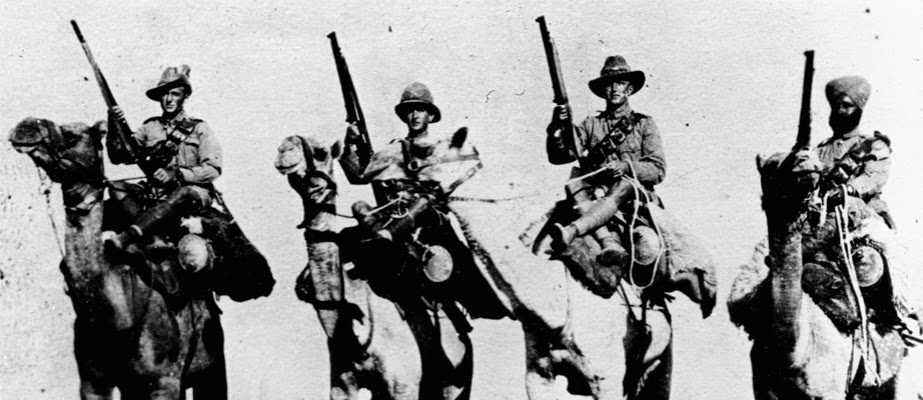 |
| Mounted troops from the Australian, British, New Zealand and Indian battalions of the Imperial Camel Corps |
To provide some perspective, we present pictures of one of the most utilized tools of that war -- the camel. Tens of thousands were used in the war in Palestine.
The difficult terrain of the Sinai, the Jordan Valley, and the Samarian/Judean hills required extensive use of the sturdy and powerful four-legged "supply truck."
Consider this report by a New Zealand officer in his book With the Cameliers in Palestine:
In the advance up the coastal plain in Palestine, in November, 1917, General Allenby used thirty thousand (30,000) camels for carrying food, water and ammunition to the troops of one portion of the eastern force of his army.
A Turkish account of the war, and specifically the 1914-1915 campaign against the British on the Suez Canal, describes the forces and the logistical nightmare of crossing the Sinai desert:
The gathering point for the VIII Corps was Beersheba, which was inland, well away from the reach of British naval artillery. From there, 25,000 men would march 300 kilometres across the desert and reach Ismailia. However, this was nothing but a mission impossible. Moreover, every man was allowed one kilogram of food and drink water per day and this meant that they needed 15,000 camels. But what they had was just 2,000 animals. [Commander] Cemil Paşa mentioned this problem in his memoirs as follows: “I think there are many people who are wandering why we couldn't find the required 15,000 camels in a place like Syria and Hejaz. We had to find 14,000 camels within one month.” Five kilograms of barley and 18 kilograms of water were allowed per horse and three kilograms of barley and five kilograms of water was allowed per camel.
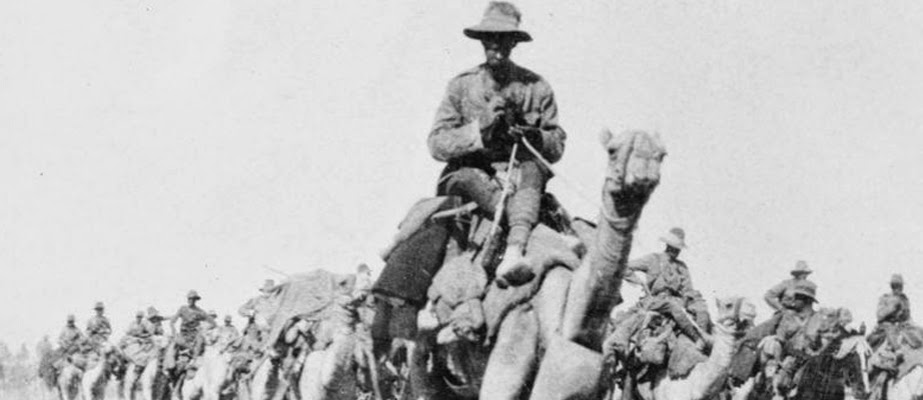 |
|
1917, during the critical battle to capture the Turkish outpost and wells
|
The Turkish account continues, describing the Turkish army's strength after difficult battles in Gaza and prior to the British General Allenby's move north into Palestine: As of May 1917, the Ottoman Fourth Army was consisting of 174,908 men, 36,225 animals, 5,351 camels, 145,840 rifles, 187 machine guns and 282 artillery pieces.
Click on pictures to enlarge. Click on captions to view the original pictures.
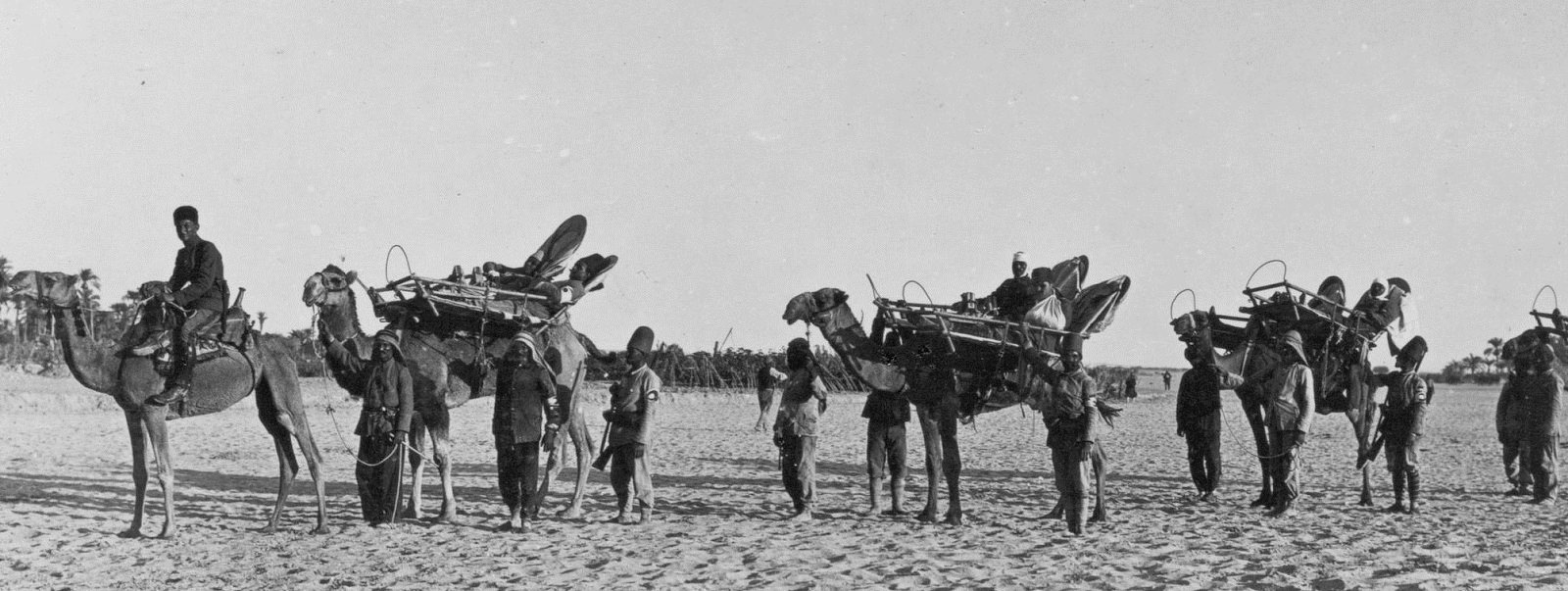 |
on a litter called a "kankalah" or "cacolet." (1917, Ottoman Imperial Archives) See also here
|
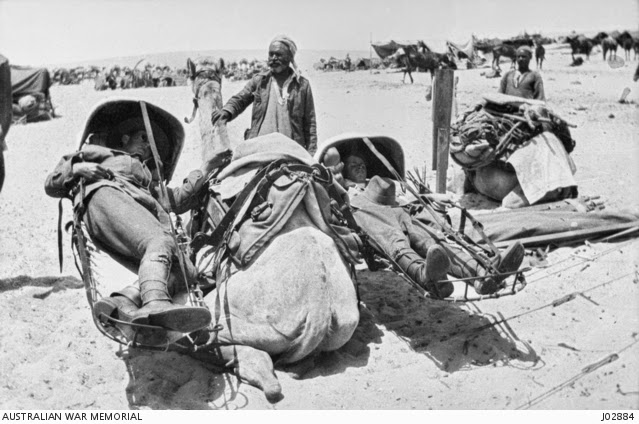 |
|
medical attention (Australian War Memorial)
|
The following description is from "With the Cameliers in Palestine:"
The field ambulance, instead of using wheeled vehicles, transported the sick and wounded in "caco-lets," on the backs of camels. These consisted of two canvas stretchers balanced horizontally, one on each side of a specially constructed saddle. In these the wounded men could either sit or lie at full length, and were shaded from the sun by a small canvas hood. The jolting
motion of the camel frequently was most trying to the badly wounded men, but it was sometimes a case of this kind of carriage, or death, and these camel cacolets, going as they did where wheeled transport was impossible, undoubtedly were the means of saving the lives of many wounded men who otherwise would have had a poor chance of being carried back to safety.
Only male camels were used in the
Camel Brigade. It would have been an unworkable system to have mixed the sexes, as in the East no mutilation of male animals, either horses, donkeys or camels for sterilisation purposes, is ever practised by the Mohammedans.
Horses generally have a strong dislike for camels, but this dislike can be overcome by daily contact. Some of the officers of higher rank of each battalion used horses during part of the campaign, and these soon grew quite accustomed to the company of their more ungainly associates.
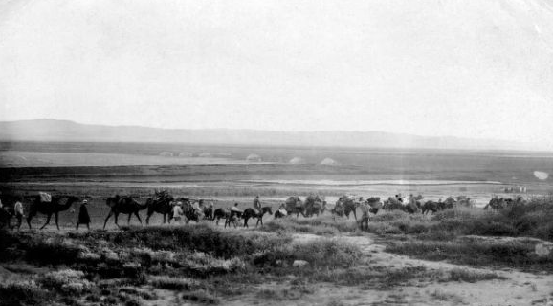 |
Turkish army camel convoy, 1917. The caption in the Harvard University places the picture near the modern
northern Israeli town of Afula in the Jezreel Valley. The body of water, however, suggests it was taken near the
Hula Valley swamps which was sparsely populated by a Bedouin tribe living in reed huts, likely pictured here.
|
 |
Original caption: The Camel Transport of the Australian Light Horse at the railhead dump, on the Philistine Plain (near Ashkelon). The camels are seen on their way to the forward area, loaded with Australian frozen mutton for the troops. In the background can be seen the tent camp.
|

|





































